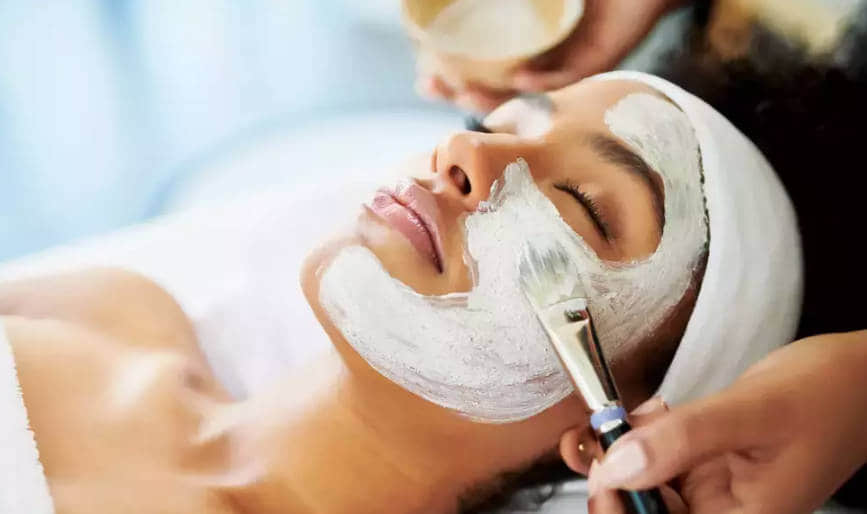Moisturizing Your Scalp 3 Simple Methods
Moisturizing Your Scalp 3 Simple Methods
How to Moisturize Your Scalp and Keep Itchiness at Bay
Do you struggle with dry skin? If so, you probably have a meticulous routine to hydrate every inch of your body, from your face to your toes. But have you ever thought about how to moisturize your scalp? That’s right, the often-neglected area under your hair deserves some pampering too. Without proper moisture, your scalp can become tight, itchy, and uncomfortable, leading to flaking and even hair breakage over time. So, let’s dive into the world of scalp treatments and explore how to keep your scalp balanced, nourished, and itch-free!
Introducing the Experts
Before we get started, let’s meet our scalp-savvy experts: – Bridgette Hill: A trichologist and scalp therapist based in sunny West Palm Beach, Florida. – Dr. Dhaval G. Bhanusali: A board-certified dermatologist straight from the bustling streets of New York City.
These two knowledgeable professionals will guide us through the wondrous world of scalp moisturization.
Understanding the Cause
To effectively moisturize your scalp, you need to understand why it’s dry in the first place. According to Hill, a dry scalp occurs when there’s a depletion in its moisturizing agent, sebum. Several factors can contribute to this, such as washing your hair with excessively hot water, over-washing, exposure to dry air, certain hairstyles, your lifestyle, diet, stress levels, and even medical conditions. Dr. Bhanusali adds that common causes of dry scalp include seborrheic dermatitis, psoriasis, and dandruff.
But how can you differentiate between a standard dry scalp and a more serious condition? Hill cleverly compares the size of the flakes to dried seasonings. Flakes from dehydrated and dry scalps resemble salt granules, while those caused by dandruff, seborrheic dermatitis, and psoriasis are larger and thicker. Psoriasis can lead to severe itching and leaves behind much more substantial flakes. So, it’s important to identify the cause and adjust your moisturizing routine accordingly.
- TheraFace PRO Honest Review of Trendy 2023 Skincare Device
- Paulina Porizkova uses this popular retinol to treat her dry, matur...
- Replacing $200 facials with this new at-home peel for glass-like skin.
Customizing Your Scalp Routine
Now that we’ve determined the cause, it’s time to create a custom scalp moisturizing routine. Hill suggests using balancing shampoos that aren’t harsh, sulfate-free, and retain the balance of your scalp’s microbiome. Say no to clarifying shampoos as they strip not only product buildup but also natural oils from your hair and scalp. Look for gentle shampoos with ingredients rich in fatty acids like avocado and shea, and amino acids to support your skin’s natural moisturizing factors.
Hill recommends Hours Daily Moisturizing Shampoo ($32), formulated with avocado oil to maintain scalp balance and hydration. Another excellent option she suggests is Klorane Oat Milk Gentle Shampoo ($22), which soothes and nourishes the scalp. And if you’re dealing with dandruff, seborrheic dermatitis, or psoriasis, Dr. Bhanusali suggests using shampoos with ketoconazole or selenium sulfide, like Nizoral Anti-Dandruff Shampoo ($12) or Selsun Blue Shampoo ($9).
When it comes to conditioners and stylers, choose products suitable for your hair type. But be cautious with dry shampoos, as they can dehydrate your scalp. To minimize heat exposure to your scalp, consider using a gentle tool like the Dyson Supersonic Hair Dryer ($429) with attachments that regulate airflow.
Moisturizing from the Inside Out
Remember, your scalp is skin too, and a healthy diet plays a crucial role in maintaining its health. Hill recommends incorporating foods rich in fatty acids, such as salmon, mackerel, flaxseed, walnuts, and eggs. These foods contain omega-3 fatty acids that help maintain hydration levels, reduce inflammation, and improve the skin barrier.
And let’s not forget the age-old advice to drink more water. Hydration is essential for your overall health, including your skin. Drinking water helps flush out toxins and benefits your skin’s function. If plain water sounds boring, consider adding electrolytes for an extra boost. BodyHealth Perfect Amino Electrolytes ($40) is a fantastic option that promotes hydration with a delightful taste and natural sweeteners like stevia and monk fruit.
FAQs – Addressing Your Scalp’s Concerns
To wrap things up, let’s address some common questions about scalp moisturization:
Q: What ingredients help moisturize the scalp? – Beyond glycerin, avocado, oat, and shea, Hill suggests looking for ingredients like clay, cherry, apple cider vinegar, and hyaluronic acid. These ingredients help soothe, rebalance, and hydrate the scalp.
Q: How can I moisturize my scalp without making my hair greasy? – Hill recommends using an oil-based pre-shampoo scalp treatment. It moisturizes and nourishes the scalp while allowing excess product to wash away during shampooing.
Q: What habits contribute to scalp dryness? – Anything that strips away your scalp’s natural oils can lead to dryness. For example, hot showers in winter when the air lacks moisture, prolonged sun exposure without protection, or harsh hair treatments like chemical processing and coloring.
Q: How do I moisturize my scalp when wearing protective styles, braids, or wigs? – Hill suggests using naturally cleansing oils like rosemary, applied weekly with a nozzle applicator bottle. Some scalps may also benefit from diluted shampoo every other week.
Now that you have some scalp moisturization tricks up your sleeve, go ahead and give your scalp the love it deserves. Say goodbye to itchiness and flakes, and hello to a healthy, nourished scalp that will make your hair shine even brighter!
Images: – :max_bytes(150000):strip_icc():format(webp)/GettyImages-1322057120-9ce0d213a23b4d68a00b1e868b129d0b.jpg) – Moisturize Your Scalp –
– Moisturize Your Scalp – :max_bytes(150000):strip_icc():format(webp)/GettyImages-1338374034-a79140bc263440a399c21652cd3f2510.jpg) – Healthy Scalp
– Healthy Scalp
:max_bytes(150000):strip_icc()/083123-hailey-bieber-pore-pads-social-360bd8220aea418ca9444475dc1241f7.jpg)
:max_bytes(150000):strip_icc()/hourglasshaileybiebersocial-5693f37de0334b4a889948af70d7e699.png)
:max_bytes(150000):strip_icc()/083123-kim-cattrall-joanna-vargas-soc-d7f3a724dd4f416aa34b8dc07534f581.jpg)
:max_bytes(150000):strip_icc()/ashleytisdalewhatiputonmyfacesocial-51cf20e9fe30425da5b9d5ab17a98a9c.png)
:max_bytes(150000):strip_icc()/082923-naked-sundays-glow-mist-social-24118b2bd2224fa9878211e9c70523b2.jpg)
:max_bytes(150000):strip_icc()/083123-serum-soc-5fed5c05eb73422cb426cc78377b056f.jpg)
